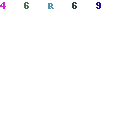Ackad awarded AFOSR grant for physics research
Physics professor Edward Ackad received a grant from the Air Force Office of Scientific Research (AFOSR) through the Young Investigator Research Program (YIP).
The YIP’s objective is to “foster creative basic research in science and engineering,” according to the AFOSR press release.
A total of $15.5 million will be distributed amongst 42 scientists and engineers from 32 research institutions over a three-year period. This year the AFOSR received 234 proposals.
Ackad said he is excited about receiving the grant for his research proposal, Understanding Laser-Cluster Interactions in the X-ray Regime.
“I am honored, humbled and thrilled. I can’t wait to start,”Ackad said.
Ackad’s research includes matching his predicted model’s results from current physics theory to a model done in experimental labs in which intense x-ray radiation is shone on nanoscopic matter. His model took many years to build on the computer.
According to Ackad, a direct comparison between theory and experimental results is “state of the art” or “cutting edge.” Ackad added that this is due to a mixture of having enough computer power and a “malleable model valid over a large range of energies.”
“I seek to enhance our understanding of how matter behaves in this newly accessible frontier,” Ackad said. “It’s a lot of work. No one has ever done it.”
In the labs, ultra-intense and ultra-short x-ray is “shot at nanoscopic chunks of matter” which disintegrates “very quickly” and is measured.
These facilities, according to Ackad, seek to determine the structure of human relevant proteins “to help us understand their biological functions.”
“My work may one day be applicable to aiding this endeavor since the proteins are exposed to this ultra-intense radiation during their imaging,”Ackad said.
According to Ackad, his models will be able to predict how the protein reacts under the ultra-intense x-ray pulse.
“Clusters of matter are a good first step to eventually understanding how more complicated proteins will behave under intense x-ray pulses,” Ackad said.
Ackad will compare the lab results with his model of how he predicted the “signal” should look like. One signal he looks at is the distribution of temperatures of the electrons and ions.
He said depending on how they compare, new physics laws could “potentially be gleaned at.”
“If I’m right, there’s no new physics and I’m exploring all the new emerging phenomenon. If I’m wrong, then I would be one of the first persons to glimpse at new physics,” Ackad said. “What could be more exciting than being wrong? That would potentially be a very big discovery.”
Filed Under: Physics • Uncategorized













